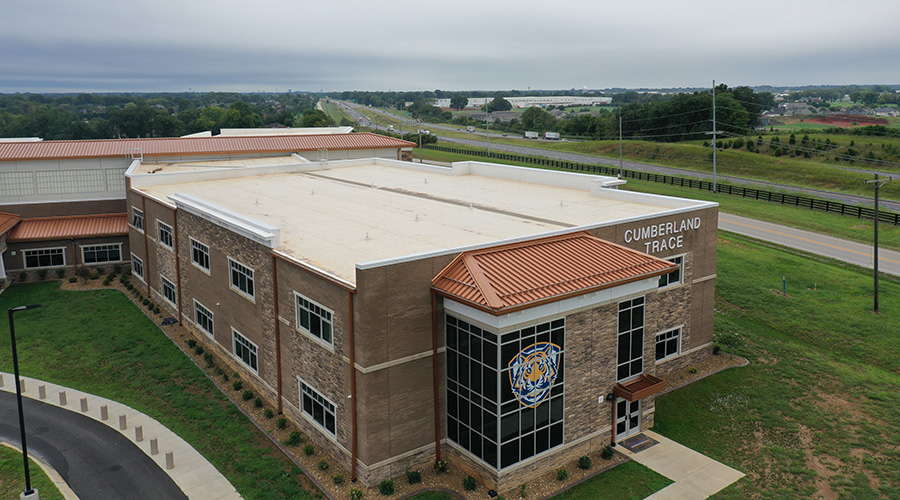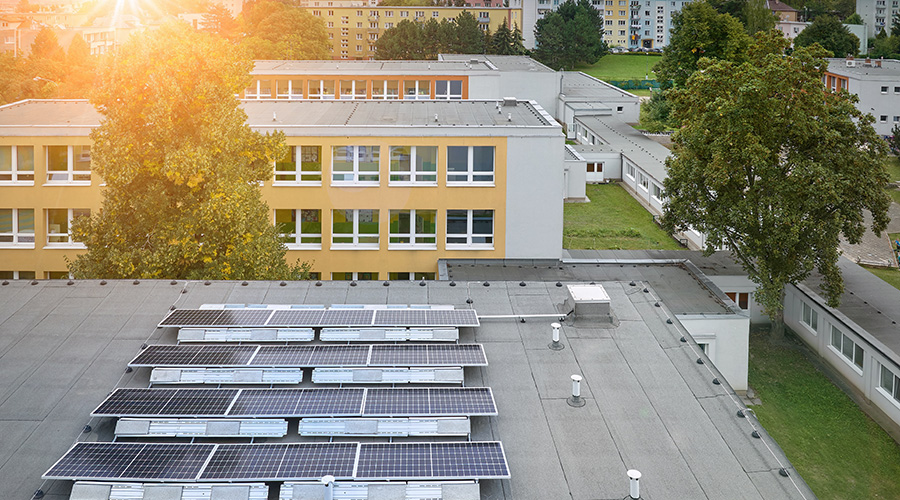Layered Security Can Help Protect K-12 Students Against Shootings
The scary fact is there is no practical way to make a school utterly resistant to a person hell bent on gaining access and causing mayhem. But experts agree there is plenty school facility managers can do to make it hard to breach the facility. In the absence of absolute safety, the goal is gaining response time, even measured in seconds. Layered security measures are the way to go, says Irene Nigaglioni, principal at PBK and outgoing chair of the Council of Educational Facility Planners International. "It's a belts and suspenders approach," she says.
A school is more than just the main facility, so facility managers have to take the grounds, and outlying buildings and infrastructure into consideration when thinking about security. However, when it comes to securing the main facility, the first area of scrutiny should be the envelope. Schools have a lot of doors, and often these are left propped open. "The biggest problem in a high school is that kids are kids, and they just leave the door open," says Jeff Frye, facilities director at Walsingham Academy in Williamsburg, Va. Frye had door contacts installed on all exterior doors, which send a notification via text message and email when the door is left propped open.
While propped doors are a clear vulnerability, so are overly polite occupants. Nigaglioni suggests facility managers walk their perimeters and knock on closed doors to see if they're let in.
The next area to scrutinize is the entrance. Before the shooting at Sandy Hook Elementary in Newton, Conn., the Tomah Area School District in Wisconsin had largely unregulated main entrances to its 11 facilities and visitors operated on an honor system to check in at the main office. Once Sandy Hook happened, the district went on lockdown, says Greg Gaarder, business manager for the district. Individuals were stationed at the entrances to screen visitors, but this was not feasible as a long-term solution.
For schools with high visitor volume, the district has installed secured vestibules with security glass and a greeter window. For outlying schools with lower visitor volume, door security systems were put in place, including an operable camera with a fish-eye lens, two-way audio, and remote door operation. As funds become available, all schools in the district will be retrofit with entrance vestibules, Gaarder says.
Creating vestibules that funnel visitors to the main office is a first-line defense strategy many schools are adopting. At the Wall School District in Wall, S.D., parents in the rural community were hesitant to accept the need for such measures at their school, says Dennis Rieckman, superintendent. But adding measures such as the vestibule and a video identification system has helped ease some concerns at the school, he says, as the nearest first responders are typically at least 45 minutes away.
Replacing glass in entryways with bullet-resistant options can get pricey. Another option is installing impact-resistant film on existing glass, which can at least help to slow down an intruder, says Nigaglioni.
Related Topics:












